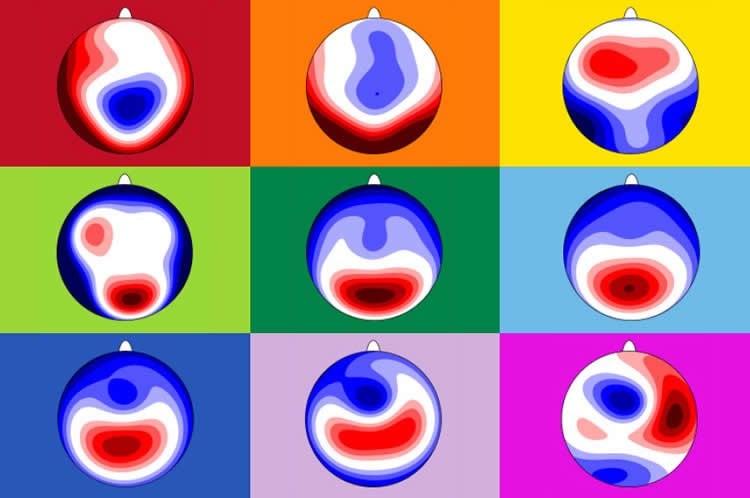Freiburg scientist has decoded brain processes associated with the subconscious evaluation of social groups.
Humans assess each other within milliseconds, deciding whether someone is likeable or not. The Freiburg psychologist and neuroscientist Dr. Bastian Schiller and a team at the University of Basel in Switzerland are the first to have discovered the subconscious processes in the brain and the order in which they occur that determine how humans process social information such as likability or antipathy. Their findings have been published in the latest issue of the U.S. science journal Proceedings of the National Academy of Sciences (PNAS).
The researchers employed the Implicit Association Test (IAT) in their study. The subjects reacted to positive and negative words and concepts that they associated with their own or a foreign group. Schiller and the Swiss research team of Prof. Dr. Daria Knoch and Dr. Lorena Gianotti administered the IAT in a group of soccer fans, for instance. While the subjects were responding to concepts such a “love” or “death”, or the names of players on their own versus the opposing team, the researchers measured their brain waves on an electroencephalogram. They aimed to investigate individual information processing steps and their duration during subconscious social assessments. To do this, they analyzed functional “microstates” in the brain.

These are short phases – some lasting just a few milliseconds – during which a neuronal network is activated to carry a particular processing step. Researchers had already learned that reaction times in the IAT are longer when people associate foreign groups with positive characteristics. What Schiller and the research team discovered in their analysis of the microstates is that the longer reaction times are not attributable to additional processing steps, but that some individual steps take longer. According to Schiller, “This study demonstrates the potential of modern electrical neuroimaging in helping to better understand the origin and time course of socially relevant processes in the human brain”. A member of Prof. Dr. Markus Heinrichs’ working group at Albert-Ludwig University in Freiburg, Schiller is currently investigating the extent to which this discovery can facilitate the diagnostics and therapy of mental diseases involving social deficits.
Source: University of Freiburg
Image Credit: Image is credited to Bastian Schiller/University of Freiburg.
Original Research: Abstract for “Clocking the social mind by identifying mental processes in the IAT with electrical neuroimaging” by Bastian Schiller, Lorena R. R. Gianotti, Thomas Baumgartner, Kyle Nash, Thomas Koenig, and Daria Knoch in PNAS. Published online February 22 2016 doi:10.1073/pnas.1515828113
Abstract
Clocking the social mind by identifying mental processes in the IAT with electrical neuroimaging
Why do people take longer to associate the word “love” with outgroup words (incongruent condition) than with ingroup words (congruent condition)? Despite the widespread use of the implicit association test (IAT), it has remained unclear whether this IAT effect is due to additional mental processes in the incongruent condition, or due to longer duration of the same processes. Here, we addressed this previously insoluble issue by assessing the spatiotemporal evolution of brain electrical activity in 83 participants. From stimulus presentation until response production, we identified seven processes. Crucially, all seven processes occurred in the same temporal sequence in both conditions, but participants needed more time to perform one early occurring process (perceptual processing) and one late occurring process (implementing cognitive control to select the motor response) in the incongruent compared with the congruent condition. We also found that the latter process contributed to individual differences in implicit bias. These results advance understanding of the neural mechanics of response time differences in the IAT: They speak against theories that explain the IAT effect as due to additional processes in the incongruent condition and speak in favor of theories that assume a longer duration of specific processes in the incongruent condition. More broadly, our data analysis approach illustrates the potential of electrical neuroimaging to illuminate the temporal organization of mental processes involved in social cognition.
“Clocking the social mind by identifying mental processes in the IAT with electrical neuroimaging” by Bastian Schiller, Lorena R. R. Gianotti, Thomas Baumgartner, Kyle Nash, Thomas Koenig, and Daria Knoch in PNAS. Published online February 22 2016 doi:10.1073/pnas.1515828113







